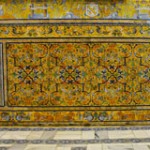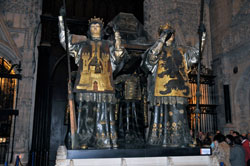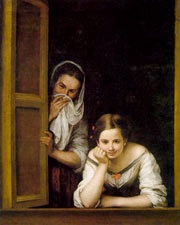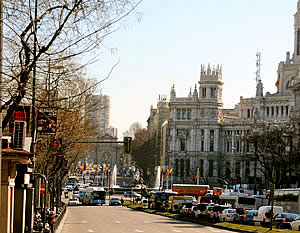October 21, 2009 Maui

Delphi, Greece
There are places in this world that I call “mythological zones,” and by this, I mean places where the natural beauty of the land is so compelling and so overpowering that it opens pathways in my mind to an altered state of awareness. The island of Maui in Hawaii, Delphi and Santorini in Greece, and even my home in the high desert of Southern California are such places.
The ancient Sanskrit poet, Kalidasa, has a delightful poem in which a love- sick Yaksha, a kind of spirit being, is exiled to the mountains of southern India for neglecting his duty to his master, Kubera. In exile, this Yaksha yearns to be with his lover, and so he talks to the clouds and asks them to travel back to his home in the Himalayas and carry a message of love to his wife. Hence, the name of the poem, The Cloud Messenger. Kalidasa’s poem is an exquisite work that describes the beauty of nature and the inner feelings of this exiled Yaksha. Unfortunately, I had always thought of this poem, and other works of literature, as just something born from the fanciful imagination of its author. I did not take them seriously. Then one day, as I sat in a field on the island of Maui, in an environment similar to the Yaksha’s exile, I suddenly became overtaken by the beauty of this land, with its volcanoes and storm clouds, and its ocean and crashing surf. As I sat in this field, surrounded by green grass and wild flowers, I began to feel myself absorbed by this
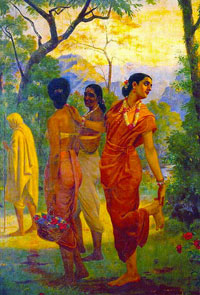
Megha Duta
natural beauty. Suddenly, as if the gods had opened their eyes and seen me, the world became “alive.” The grass “sang” for me and the flowers “smiled” at me; in effect I could “talk with the gods!” I had entered, what I call, for lack of a better term, a state of “wonder,” perhaps how a child sees the world; and at that moment I remembered Kalidasa’s poem and understood how his inspiration was possible. He must have been in his own state of wonder when he wrote The Cloud Messenger. It occurred to me that this creative state must be the source of a lot of literature and art, and even music.
Mostly I live in a “normal” state of awareness, but every so often, when the conditions are right, I slip into this special state, which I think is the source of creative genius. Had I not been forced to wait in Maui for a few extra hours (my flight to Los Angeles was not until late in the evening and my hotel room had expired), had I not veered off the regular road and found this quiet field, in other words, had I not left the tourist world, I surely would have missed seeing this magical side of Maui. Visitors come to this wonderful island from all over the world, and no doubt they appreciate its beauty and enjoy its delights, but I wonder how many of them step beyond the rational world of modern tourism and experience the Maui that I had seen, the mythological Maui. My vision in Maui had occurred purely by accident.
So I question whether there are ways to recreate this state at will. If the beauty of nature or even a Sanskrit poem can evoke a change of awareness, why not a painting, a sculpture, or even music? Why couldn’t all forms of art act as “doorways” to new states of awareness?
There is a song entitled Northern Lights by a contemporary music group, Enigma. What

Northern Lights
makes this song beautiful is that simply through sound, the music accurately depicts how the northern lights look and how they act. It is uncanny how perfectly this music represents these lights and how, just by hearing this music, it evokes the same state of awareness I experienced as a youth when I used to see these lights on a cold winter night in Canada. In those days I did not articulate my feelings as I am now, but seeing the lights effected a change of awareness, just like Maui, and at times the lights became so distinct and so powerful they put me in touch, so to speak, with the “aurora gods.” In other words, through this music, sound functions as a representation of the actual physical event, which in turn evokes the same change in awareness as the original event. So again I ask, if this can occur with music, then why not with paintings, sculpture, literature and other forms of art? After all, clouds and mountains and northern lights, or any other physical event, when reduced to their essence, is simply light entering the human brain through the eyes. Similarly, thunder or music is sound entering the brain through the ears, paintings are colors and textures on canvas that become light, and great works of literature are just dots on paper or pixels on a computer screen that also become light that enter the brain through the ears. Essentially all of these things are input into the human brain through the senses. Ultimately it is the human mind that processes this information and makes the determination, “This is beauty,” “This is art,” “This makes me feel creative.”
But not all vistas of nature, not all literature, not all paintings, and not all music evoke the same changes of consciousness in everyone. One person’s art is another person’s non art. The perception of beauty and the change of awareness that art can induce is highly subjective. How I respond to Maui or the northern lights is conditioned by who I am. Had I not seen the aurora borealis as a youth, I may not have responded to the music in the way I did. Had I not grown up with an appreciation of pristine wilderness, seeing it in northern Canada, I may not have been receptive to the pristine tropical wilderness of Maui.
And yet certain natural vistas or pieces of art or literature or music are universally accepted as manifestation of beauty. These works of art, the Mona Lisa for example, or certain vistas of natural landscape, the Grand Canyon in Colorado, for example, transcend individual subjectivity and cultural boundaries and are accepted by people in general as universal manifestations of beauty. And yet, these things can also be reduced simply to sensory input within the human brain. Ultimately, it is the human mind that responds to this input. Perhaps there are “universals,” archetypes, to use Jung’s terminology, within the human mind that respond to certain external “triggers,” and it is these triggers that we call the art. Perhaps good art somehow evokes or activates these universals; and the more precisely these universals are evoked, the more we judge the these triggers, the paint strokes, the colors, the sounds, the pixels, etc to be good art. What constitutes good art, therefore, is how precisely a particular painting, a piece of music, or a work of literature evokes these universals.
I wonder if it is possible to enter this creative state of awareness at will? Certainly travel to places like Maui or Delphi can induce this state, and certainly strong emotions, love or sadness, can induce this state. I know that dedication to a religious or political cause, or even certain drugs can open the mind to this state, but can art also function as a doorway into this creative mode of awareness? Of course the answer is yes. Unfortunately I used to think of art as just something “nice” to look at, but that it had little value beyond some form of artistic entertainment. I would often find myself in an art gallery filing passed the paintings one by one as if I was working through a check-list of items. Yet each one of these paintings took weeks, months and often years to produce. Each one is a reflection of the artist’s consciousness and creative perspective. I was missing so much by not understanding the power of art. I now think it is incumbent on me as a viewer to give more than just a “check-list” recognition to a serious work of art. This is not to suggest that I have to respond to every painting, every sculpture, every work of literature or score of music. Art remains subjective, but at least, for the pieces that I do choose to view, I now see the creative potential that is contained within each work. I now look at art in a new way and better understand the power of art to evoke this change in awareness.
So I wonder, if I go to galleries and take time to absorb in detail a few works of good art, if I fill my home with a few famous paintings, even as reproductions, if I listen to more good music, if I give myself an aesthetic education by studying art and music, in other words, if I fill my world with more art and beauty, could this have a positive influence on my ability to be more creative? Could I write my own version of Kali Dasa’s Cloud Messenger?
 The Cathedral of Seville is a Gothic cathedral built over the remains of a mosque. Evidence of the mosque, pieces of its foundation, can be seen in one of the cathedral’s courtyards. As far as I can tell there is no Islamic influence in the cathedral itself. This is a highly embellished cathedral and I am told (I took the audio tour.) that it is the third largest in the world, even larger than Hagia Sophia in Turkey. The inside seems complicated and undefined in terms of its spatial relationships. I expected to find something like I’ve seen in the Notre Dame or Chartres cathedrals. An entrance way opening to a large main altar with a large seating area in the middle, but saw none of that. It is therefore hard to understand how the cathedral “works” as a place of worship. It seems too divided up. There is no central space. In fact, I did not perceive the
The Cathedral of Seville is a Gothic cathedral built over the remains of a mosque. Evidence of the mosque, pieces of its foundation, can be seen in one of the cathedral’s courtyards. As far as I can tell there is no Islamic influence in the cathedral itself. This is a highly embellished cathedral and I am told (I took the audio tour.) that it is the third largest in the world, even larger than Hagia Sophia in Turkey. The inside seems complicated and undefined in terms of its spatial relationships. I expected to find something like I’ve seen in the Notre Dame or Chartres cathedrals. An entrance way opening to a large main altar with a large seating area in the middle, but saw none of that. It is therefore hard to understand how the cathedral “works” as a place of worship. It seems too divided up. There is no central space. In fact, I did not perceive the
